Murder, robberies, police chases, and prison escapes sound more like an action movie plot than a real-life story. However, the true tale of the crime duo Bonnie and Clyde involves all of those things – plus a tragic love story.
The young couple, who had an unwavering dedication to one another, were responsible for heinous crimes during their two-year crime spree in the early 1930s.


Their relationship and offenses have been romanticized over the years, inspiring several movies, notably the 1967 film named after them.
Despite the couple often being seen as rebellious figures who defied authority, their tale is much darker once you peek beneath the surface. Let’s take a look at the real-life account of Bonnie and Clyde and the chaotic spree of crimes that gained them infamy.
The Beginnings Of An Infamous Pair
Bonnie Elizabeth Parker was born in Rowena, Texas, in October 1910. Her father passed away when she was four years old, after which her mother moved back to Cement City in Dallas to find work as a seamstress to support her daughter.
Despite the trauma of losing a parent at such a young age, Bonnie thrived at school and dreamed of being famous when she was older.
This dream would eventually come true, although the fame she found wasn’t for singing, dancing, or acting as she’d initially hoped.
A bright student, Bonnie was known for being artistic. She enjoyed writing poetry and creating short stories.
However, her education would be cut short when she dropped out of school to be with a boy named Roy Thornton, whom she fell in love with. The pair got married in 1926 when Bonnie was just 15 years old.

However, the relationship was fleeting. Roy would often take off without letting his young wife know when he’d be back, and he would often find himself in trouble with the law.
The relationship ended when Bonnie decided she’d had enough of Roy’s antics and moved back in with her mother. The pair never got around to divorcing.
Clyde Champion Barrow was born in March 1909 in Ellis County, Texas. The Barrows were a poor family with nine mouths to feed, seven of whom were children.
Clyde and his siblings spent some time sleeping under the family’s wagon as their parents couldn’t afford a tent.
As Clyde grew up, he realized it was easier and quicker to make money by stealing cars, cracking safes, and robbing his food instead of finding genuine work. One of his first run-ins with the law was for stealing turkeys.

The story of how Bonnie and Clyde first crossed paths has never been fully confirmed, but the most widely accepted account is that they were introduced by a mutual friend in January 1930.
We know that the pair were inseparable upon meeting, for the first few months, anyway. The law caught up with Clyde for a car he’d stolen, and in April 1930, he was sent to jail.
Bonnie was devastated at losing her partner, whom she’d already declared her love for, and she vowed to do anything to get him out of prison.
When she visited Clyde behind bars, the wily young woman managed to smuggle in a gun, which the criminal used to escape successfully. However, the taste of freedom was short-lived, and Clyde soon found himself back in jail.
This time, however, he would be subjected to a violent sexual assault at the hands of another inmate. Clyde’s revenge came in the form of a lead pipe to his attacker’s head, killing the man.
Clyde was never convicted for this crime since another inmate took the blame for him.
In the 30s, hard labor was a common punishment for those sent to jail. To avoid having to partake in this, Clyde amputated two of his toes to make himself ineligible for the tough manual work.
However, unbeknown to the man, he was due to be released just days after he mutilated himself. He’d essentially cut off his toes for nothing.
In February 1932, Bonnie and Clyde were reunited, and their reign of illegal activities was about to begin.
Bonnie And Clyde’s Criminal Inception
Clyde met a young man named Ralph Fults while he was incarcerated. The young men became fast friends and, upon their releases from prison, met up to carry out a plan they’d concocted: raid Eastham prison, where they’d both served their sentences.
However, before they could carry out this raid, they needed to ensure they had enough firepower to kill anybody who got in their way. So, they set about robbing weapons from various places, including hardware stores.
Bonnie would help her lover and his friend carry out these robberies but found herself caught red-handed attempting to burglarize a store with Ralph.
The pair were sent to jail, which split the lovers for a second time. While incarcerated, prison life seemed to change Bonnie – and not for the better. She began to lean into the idea of being a “gangster.”
She also wrote many poems, one of which would be an ominous and accurate look into the future:
Some day they’ll go down together
they’ll bury them side by side.
To few it’ll be grief,
to the law a relief
but it’s death for Bonnie and Clyde.
However, Bonnie was released after just a few months since officials couldn’t comprehend a woman carrying out such a crime of her own free will.
She reunited with Clyde as soon as she was free. Her time in jail had only fortified her loyalty toward her partner in crime.
Ralph would never cross paths with his criminal companions again, but Bonnie and Clyde were already moving on and recruiting a new cohort of delinquents.
By the summer of 1930, Raymond Hamilton and Ross Dyer had pledged allegiance to Bonnie and Clyde. On a warm evening in August of that year, the three men were drinking moonshine at a gathering in Oklahoma.
Police officers approached Clyde after recognizing him as a suspect accused of carrying out a shooting earlier in the year, a crime he didn’t actually commit.
Upon being approached by officers, Clyde and Raymond pulled their guns out and began shooting indiscriminately. They killed one officer and badly wounded another.
They fled the scene without being apprehended. This would be the beginning of Clyde’s murderous spree.
The next murder allegedly occurred just two months later, where the gang – now called the Barrow Gang – shot a man in Sherman during an armed robbery.
It’s uncertain if the Barrow gang were actually responsible for this killing, as some historians have purportedly found some evidence to suggest Clyde wasn’t in Sherman at the time of the killing.
The evidence against the Barrow gang was eyewitnesses who pinpointed Clyde as the gunman, although his guilt has never been ascertained.
The Barrow Gang recruited another member to their group on Christmas Eve, 1932, when 16-year-old William Daniel Jones joined. The teen would commit his first crime with Clyde the following day.
Bonnie, Clyde, and William were in Temple, Texas, when the group’s youngest member spotted a brand-new car with the keys in the ignition. He hopped in the car and turned the key, but the inexperienced boy struggled to get the vehicle started.
Clyde stepped in to help the teenager, but before the pair could make off with the car, its owner, Doyle Johnson, raced to the thieves and grabbed Clyde.
Doyle was shot in the neck and died from his injury the following day. Bonnie acted as the getaway driver for Clyde and William, whisking them to safety as a crowd of people surrounded the dying victim.
Just a month later, the Barrow gang added more names to their ever-increasing tally of bodies.
The gang were certainly making a name for themselves but had so far managed to evade justice for their crimes. Desperate to stop them, the police arranged a stakeout to apprehend the group.
Still, instead of it being the end of the gang’s reign of terror, it ended in the murder of Tarrant County Deputy Malcolm Davis after Clyde shot him.
Three months later, in March 1933, Clyde’s brother Buck and his wife Blanche joined the group. The five, including teenage William, lived in a hideout in Missouri, and their days were spent drinking cases of beer and rowdily playing card games.
Their loud behavior attracted the attention of the usually quiet neighborhood, and the police were called when a game of cards became especially unruly, with gunshots being fired. Five officers arrived at the noise complaint, only to be met with gunfire.
Clyde and Buck fatally shot two officers. Bonnie assisted by shooting at the officers and allowing the Barrow brothers to collect their getaway car. Bonnie fired mercilessly, causing officers to retreat.
Sergeant Kahler quickly hid behind a tree, although one of Bonnie’s bullets struck the tree, causing sharp wooden splinters to pierce Sergeant Kahler’s face. The gang then raced off, evading the police as they made their way to Joplin.
However, in their haste to leave their hideout, the group left most of their belongings behind. One of them was a roll of undeveloped film.
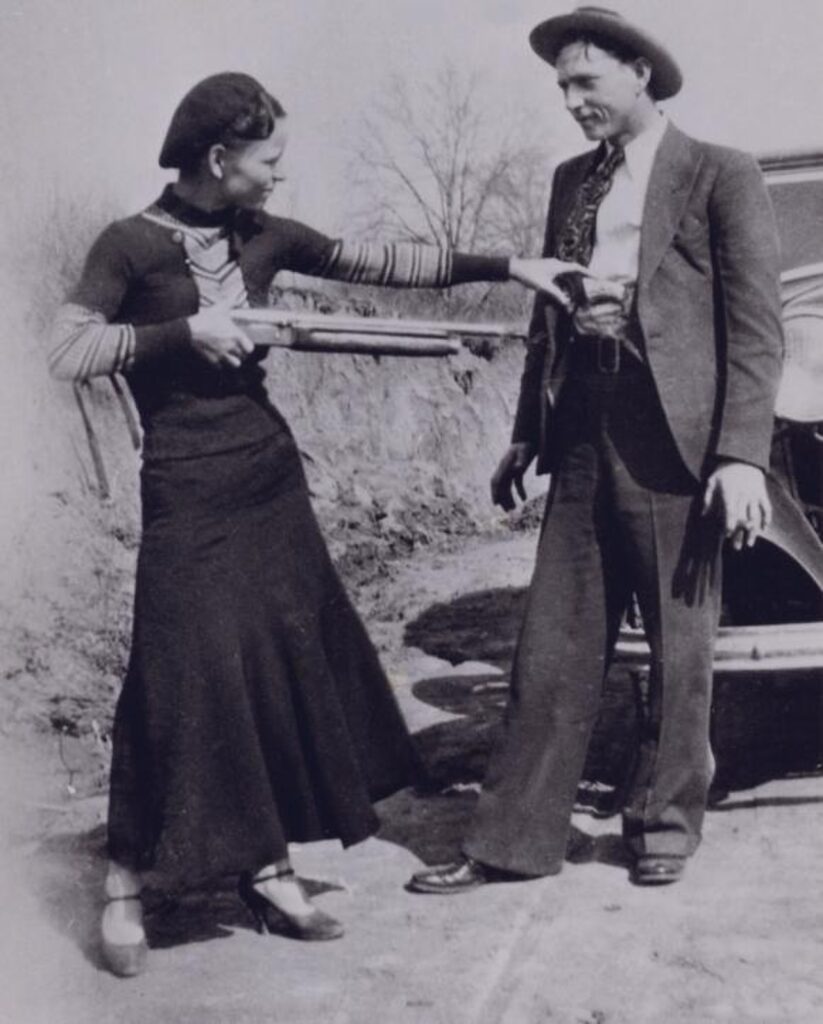
That film would produce one of the most infamous photos in true crime history: an image of Bonnie, cigar in mouth, leaning against a car with a pistol in her hand.
It would be this picture that the media used in their front-page news stories detailing the Barrow Gang’s crimes.
On The Run
The quintet – Bonnie, Clyde, Buck, Blanche, and William – were now on the run from the law, but that didn’t stop them from carrying out robberies and car thefts along the way.
One of the more interesting aspects of their crimes is the kidnappings they carried out. On occasion, they’d take hostages, only to set them free at remote locations far from their hometown.
In these cases, they’d give the victim a handful of cash to get themselves home.
However, the vast majority of Bonnie and Clyde’s criminal escapades were violent and resulted in deaths. Neither police officers nor innocent passersby were off-limits, and the Barrow Gang was only adding more names to their tally of victims.
Still, the much-publicized photos of Bonnie with the gun, alongside the twists and turns of her and Clyde’s crimes, captivated the American public, who enjoyed keeping up with the duo’s dramatic tale.
The press had reported their crimes with a Robin Hood-like narrative, painting the couple as targeting the rich to help the poor. While this wasn’t quite true, The Great Depression ensured people were desperate for stories of rebellion against authority.
Bonnie and Clyde’s crimes were often seen as a form of revenge against the banks and law enforcement, causing the public to sympathize with them.
Not only that, the public was entertained by the couple’s ability to give newspapers a thrilling new story to print on a regular basis.
However, the reality was a lot of in-fighting for the gang, fuelled by the stress of where they would hide out, and instability as to where they could meet their basic hygienic needs. In the end, they often took cold baths in streams when the coast was clear.
A Near-Fatal Accident
On a scorching day in June 1933, Clyde was driving toward Wellington, Texas, with Bonnie in the passenger seat and William in the back.
Something distracted Clyde from the road, and he missed a sign alerting him to an upcoming bridge being under construction. The three unwittingly sped into a ravine, causing injuries to the trio, especially Bonnie.
The car had flipped over, and Bonnie’s leg had been irreversibly damaged. It was either a fire or battery acid that caused it, but either way, the skin on her right leg had come off, and bone was exposed.
Her partner dragged her from the wreckage, and it was discovered the woman couldn’t walk on her own. The group needed help, and calling an ambulance wasn’t an option.
A farmer who lived on an overlooking hilltop heard the commotion and saw the crash. He headed to the site to help, only for Clyde and William to pull out their submachine guns. They demanded that he help a badly injured Bonnie or get shot.
The terrified man guided the group to his home, and the armed men proceeded to take his family hostage. However, a hired hand on the farm managed to escape and alert the police, who made their way to the house.
Sheriff Corry and City Marshall Paul Hard quickly found themselves taken in as hostages, too.
They left their victims tied up and made their way back to Buck and Blanche. The gang was now desperate; they had few options, a whole police force after them, and were in dire need of medical care for Bonnie.
The group made their way to a tavern in Platte County, Missouri, although their presence wasn’t exactly inconspicuous.
Bonnie was clearly badly injured, Blanche’s riding breeches were an unusual choice of clothing for a woman in the 30s and attracted great attention, and the gang put newspapers up in their room windows.
The police would catch up with them when Clyde and William went to a pharmacy to get bandages and atropine sulfate to treat Bonnie’s leg. The pharmacist recognized the pair and called the police, who made their way to the tavern.
A gunfight ensued, with the police meeting their match in the five criminals, who each brandished their own gun. Even a hoard of officers and an armored car couldn’t stop the Barrow Gang.
It seemed as though luck was on the criminal’s side that day, as a malfunction in the armored vehicle caused the horn to sound, which officers mistook as the sound for a cease-fire. It wasn’t – but the pause in gunshots allowed the Barrow Gang to flee.
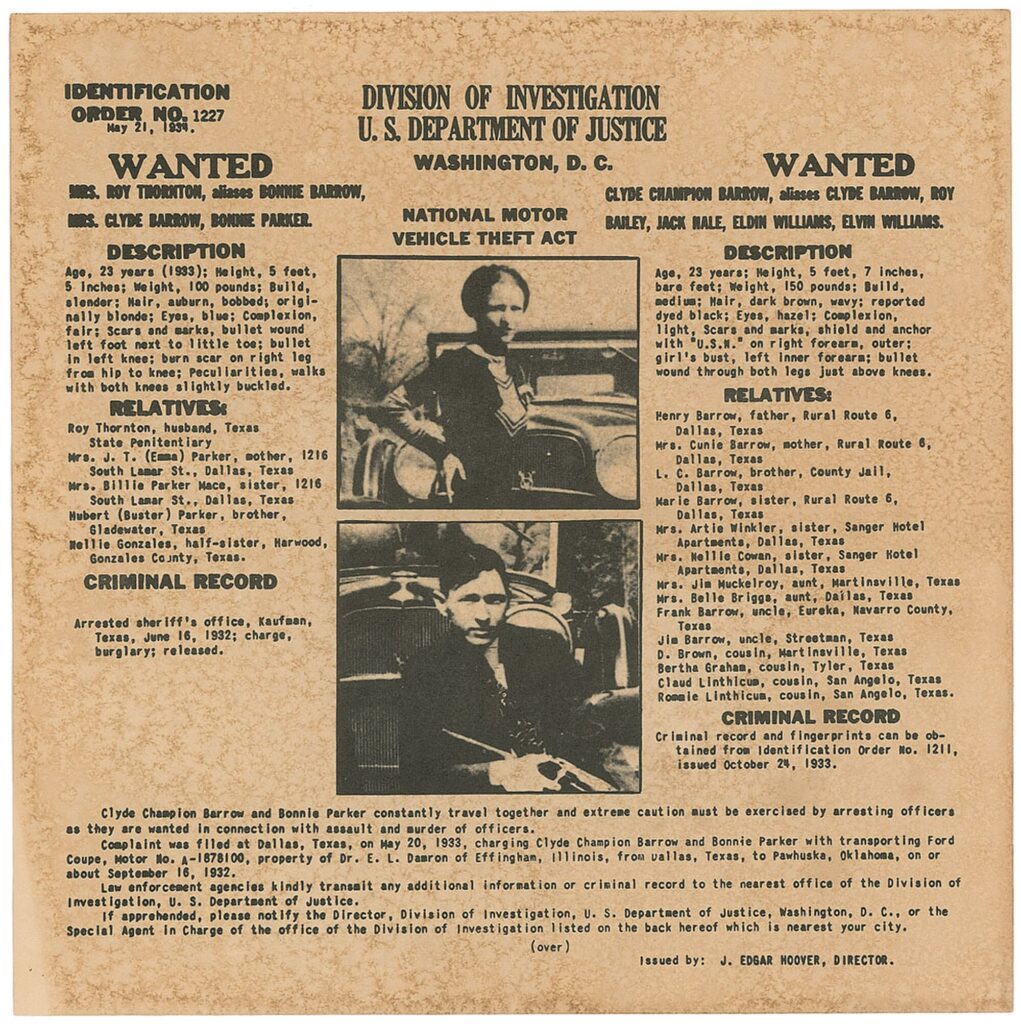
However, they didn’t escape unscathed. Blanche had been badly injured by glass shards in both eyes. Her husband, Buck, had been shot in the head but was remarkably still alive – just.
His brain was exposed, and blood wouldn’t stop seeping from his wound. The gang eventually found a desolate amusement park where they sought shelter. However, officers soon caught up with them and surrounded the park.
Word got around that a stand-off was happening, and around 100 people came to observe. As anticipated, another gunfight ensued, and this time, Buck would be shot in the back.
Bonnie, Clyde, and William managed to make off on foot while they left Buck and Blanche behind. Clyde’s brother would succumb to his injuries in hospital. Blanche was arrested.
By this point, William made the decision to leave the gang. He made his way back to his mother’s home in Houston, where police quickly arrested him. It seemed as though the Barrow Gang had all but crumbled.
Except the two main culprits were still at large.
For the next few months, the couple continued their road trip, robbing and stealing to survive, prepared to murder anyone who got in their way.
By the end of November 1933, a grand jury delivered a murder indictment against Bonnie and Clyde for the murder of Deputy Malcolm Davis, a killing that had taken place earlier that year.
The Last Resort: Frank Hamer
Bonnie and Clyde weren’t about to disappear into obscurity, though.
In January 1934, Clyde helped some of his friends break out of Eastham prison. During the escape, Major Joe Crowson was murdered by one of the fleeing inmates.
As a result, the chief of police announced everyone involved – including Bonnie and Clyde – would be hunted and killed for their crimes.
Texas Ranger Captain Frank Hamer was tasked with tracking down and killing the pair. After the prison escape, more law enforcement succumbed to the group, with Clyde killing two more officers near Southlake, Texas.

By this point, the public was becoming disenchanted with the killers and started to see them for what they were – cold-blooded criminals.
Frank Hamer was law enforcement’s secret weapon against the killer couple; he was renowned for hunting and murdering criminals, with over 50 successful kills to his name.
Law enforcement and government officials were also putting out bounties for anyone who could bring them the dead bodies of the killer couple. Most people were apprehensive about killing a woman – but not Frank Hamer.
Bonnie and Clyde had only managed to successfully break one inmate out of jail, a man named Henry Methvin. The trio made plans to visit Henry’s father in Louisiana.
Still, unbeknown to them, Frank Hamer figured out Clyde’s way of thinking and predicted he’d use Henry’s family as a source of replenishment. As such, he managed to do what no other member of the police force could do: get one step ahead of Bonnie and Clyde.
Frank got in touch with Henry’s dad, Ivan, and struck up a deal: if the father helped trap the group, including his son, Henry wouldn’t get the death penalty.
On May 23, 1934, the group was heading to Henry’s family home. Police were hiding in the bushes on the roadside, anticipating their arrival, and Ivan had parked his truck nearby.
It was hoped that Clyde would stop his car when Henry pointed out his dad’s vehicle was by the road – which he did. As Clyde’s car slowed, officers jumped out from behind the bushes and opened fire.
After years of managing to outsmart the police and carry out a spree of violent crimes, Clyde’s death was unspectacular. He was the first to die with a single bullet to the head.
Henry escaped the scene, and with Clyde dead at the wheel and Bonnie screaming beside her dead lover, officers began shooting the car, emptying bullets into the vehicle – and Bonnie and Clyde’s bodies.
Once the pistol ammo was used, and both criminals were very much dead, officers didn’t stop their onslaught. They pulled out their shotguns and made sure the killers were not making it out of this alive.
Clyde took 17 bullet wounds, and Bonnie had 26 wounds. Bonnie died wearing her wedding ring from her short-lived marriage to Roy Thornton.
Despite her love for Clyde, she persisted in wearing her wedding ring as well as a ring that was given to her by Clyde, a three-headed snake.
Frank Hamer would say he disliked having to kill a woman but noted that if he hadn’t, more law officials would have died.
The scene became something of a circus, with people arriving to take their own macabre “souvenirs” from the bloody site. One man was even caught trying to cut off Clyde’s finger. Other looters simply took shell casings they found on the floor.
Eventually, law enforcement towed the car away with the bullet-ridden bodies inside. It was the only way to disperse the crowds that had accumulated.
The subsequent funeral of the criminals saw tens of thousands of people attend. It seemed the dark intrigue that the couple evoked from the American public hadn’t quite subsided. In fact, their deaths seemed to have piqued the public’s interest further.

The couple had wanted to be buried alongside one another, although Bonnie’s mother refused to allow this to happen.
In total, Bonnie and Clyde, as well as other members of the Barrow Gang, killed twelve people, kidnapped many more, and carried out countless robberies and burglaries during their two-year spree. Bonnie was 23 at the time of her death, while Clyde was 25.
While they may no longer be side by side, Bonnie and Clyde will forever go down as one of the most infamous couples in true crime history.
Sources
https://texashideout.tripod.com/johnson.html
https://www.grunge.com/153063/the-untold-truth-of-bonnie-and-clyde/



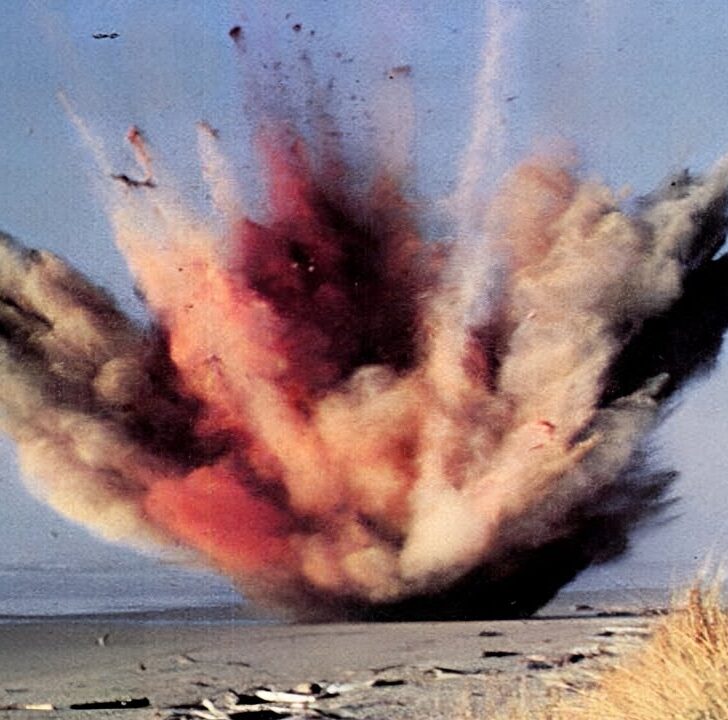
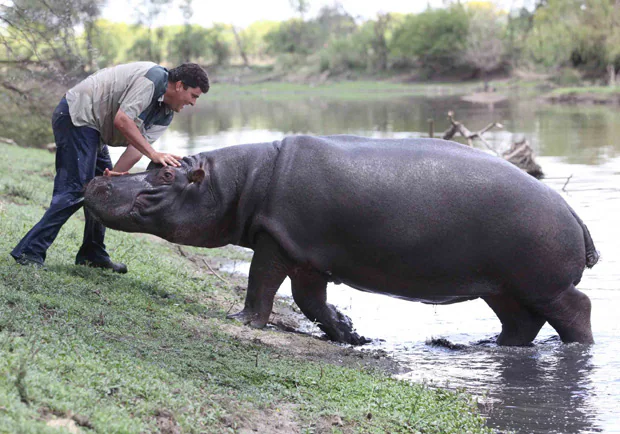

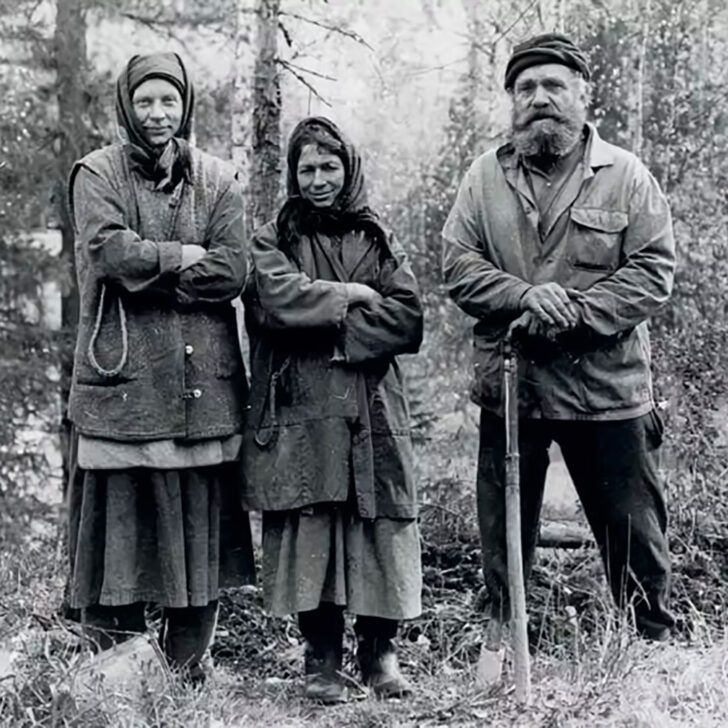



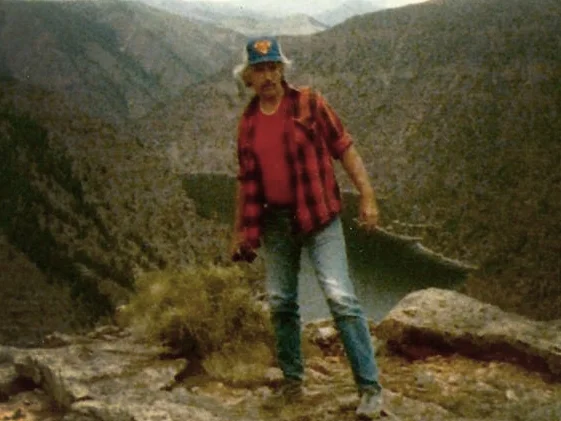
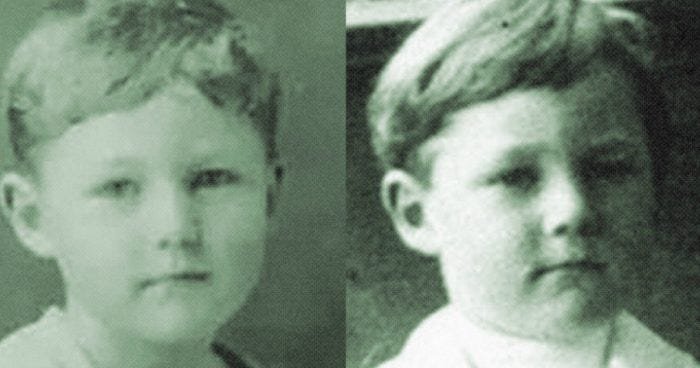

Leave a comment